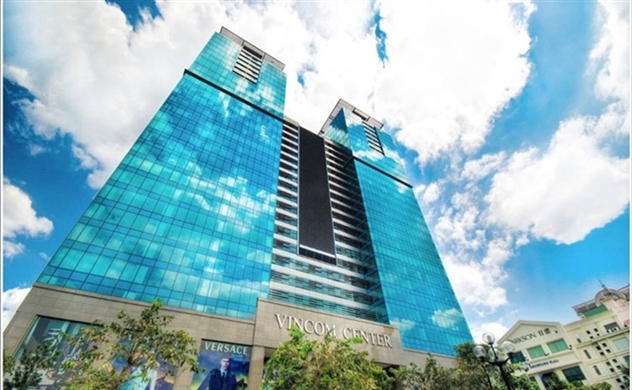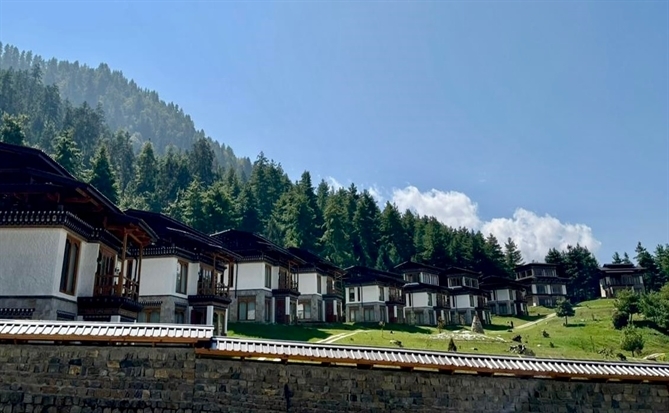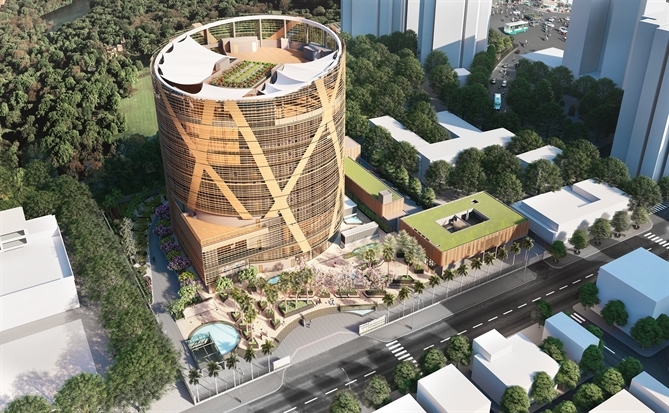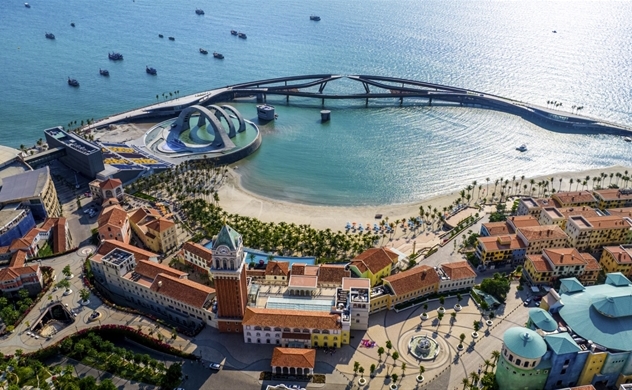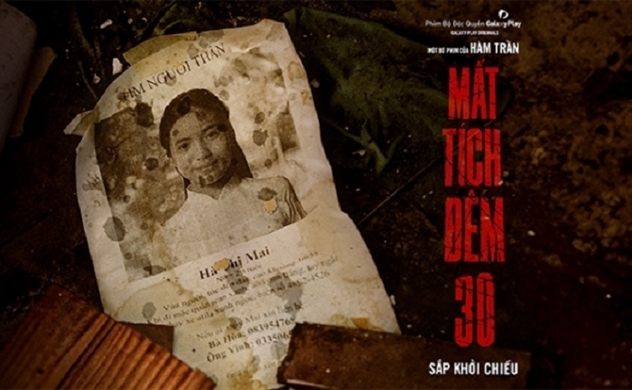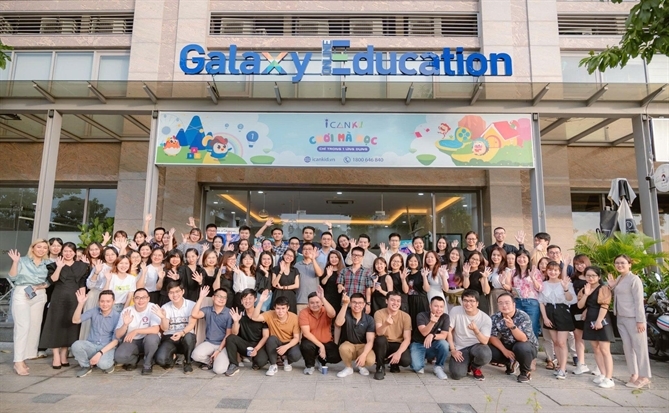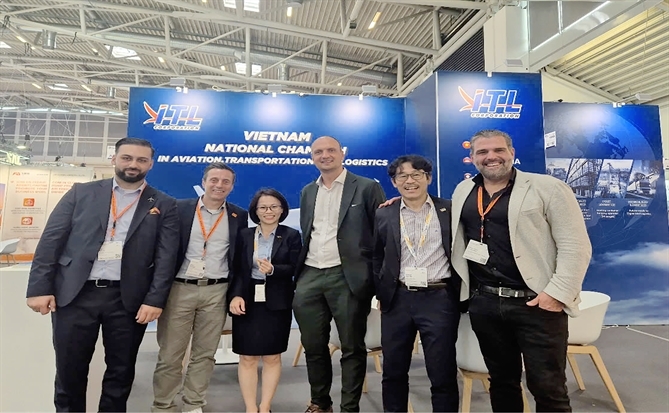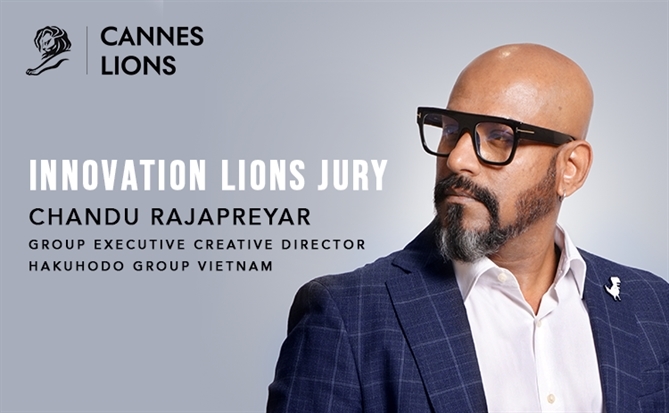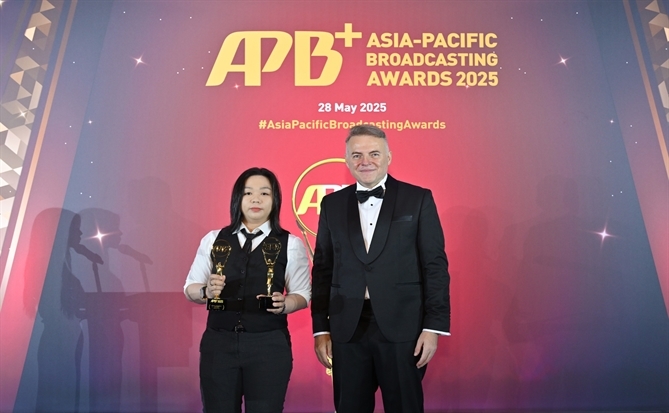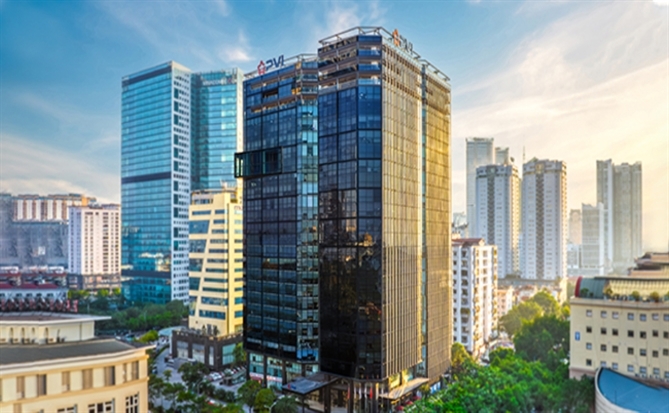"Paradise Island" Phu Quoc’s breakthrough potential post 16-billion-dollar investment
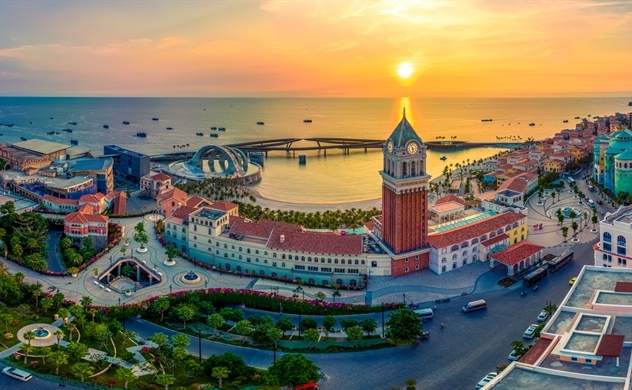
Sunset Town in Phu Quoc. Photo: Minh Tu
Once an isolated island filled with red soil and bramble trees, Phu Quoc has become an international tourist attraction and won several awards that have impressed the entire world.
In 1996, Phuong and her husband moved from the Southern city of Rach Gia to Sao Beach (An Thoi, South of Phu Quoc) on a wooden boat. It was a 120-km long voyage, which took them 6-7 hours. Their family gave them 20,000 VND (1.50 USD at the time), which was enough to buy a 20-square-meter platform.
 |
For work, the couple would climb the mountains every day to chop down trees for wood and make charcoal. Whenever Phuong encountered a tall and straight tree, she would peel off the bark and carry it home. Gradually, they managed to build a house on that 20-square-meter platform. It had enough space to set up an altar for their grandparents at the front, and a bed at the back.
Pointing to the Sao beach area where flocks of tourists come to swim and check-in nowadays, Phuong recalls: "More than 10 years ago, there were only about 10 households here. We all made charcoal for a living. We kept doing that year after year, but it still failed to provide us with a decent life. Although our land did expand more, the area was still poorly developed and there were almost no tourists."
 |
Born and raised in An Thoi, the center of Phu Quoc City, Thu Hoa Thi Tran (27 years old) remembers vividly how the town looked in her memory. Contrast to blocks of colorful and impressive houses today, the area of Sunset Town at the time was filled with bramble bushes, so ugly that even charcoal makers wouldn’t live there.
Hoa's childhood revolved around Nguyen Van Cu street, the backbone of Phu Quoc. Off the main street, every road Hoa had to cross was muddy in the rainy season and dusty in the dry season.
According to locals, Phu Quoc, the largest island in Vietnam, was like a separate world with almost no tourism or service activities during the 90s. There were almost no footprints on those blue beaches with sparkling white sand.
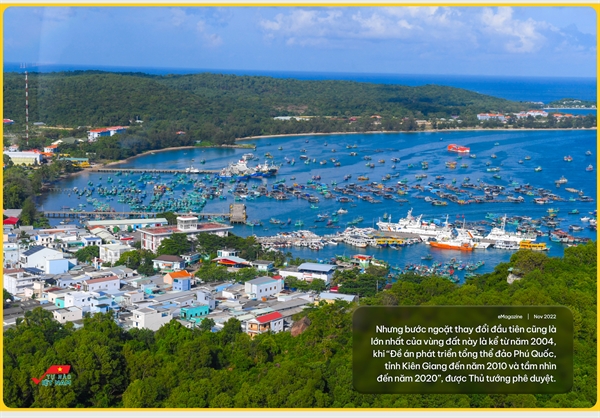 |
But the first and biggest turning point for this land came in 2004, when the master plan to develop Phu Quoc island and Kien Giang Province towards 2020 was approved by the Vietnamese Prime Minister.
According to the plan, the government would turn Phu Quoc island into a "large and modern center of tourism, leisure, and international trade in the Mekong Delta. Gradually, it would become an international tourism and trade center."
The remarkable plan gave Phu Quoc a major boost, which resulted in a series of large projects. They included Phu Quoc International Airport, which connects Pearl Island with all parts of Vietnam and major tourist centers around the world; and the longest underground power cable line in Southeast Asia to reduce rotating power cuts on the island.
Soon after, tourists began to flock to Phu Quoc. Sao Beach and Kem Beach started welcoming "mainland people" to swim, eat seafood, and drink coffee. Small thatched huts were quickly built around these beaches. A few families had already switched from making charcoal to selling steamed and grilled crabs.
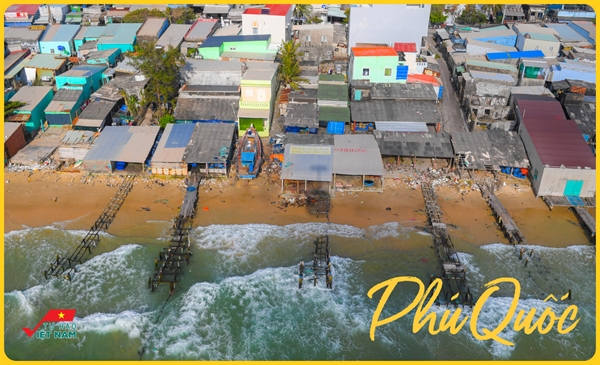 |
In 2006, the first travel company in Phu Quoc island was licensed. Locals started a new job as motorbike taxi driver and tour guide, taking foreign visitors to tourist attractions by motorbike.
Phu Quoc people started to learn to do tourism. More hostels and restaurants appeared, but they were still small scale and mainly served ordinary guests. Per capita expenditure was low, and tourists did not spend a long time there. Phu Quoc at the time lacked blockbuster products and high-class hotels to serve luxury tourists.
Initial changes were not enough for Phu Quoc to make a breakthrough with its available potential. In order to turn Pearl Island into a "tourism paradise" to compete with well-known tourism islands around the world, Phu Quoc needed the participation of large corporations that have great visions and missions, and special policy mechanisms.
_251551566.jpg) |
The next turning point came to Phu Quoc in 2013, when the government’s Decree 80 was issued. According to the decree, project investors on Phu Quoc island would be entitled to the highest incentives and support. Foreigners entering Phu Quoc would also have visa exemption for up to 30 days. The government would also continue to invest in the locality’s traffic systems, electricity, water, airports, and seaports.
Thanks to the [1] open-door policy, by 2021, Phu Quoc City had attracted a large number of "eagle" businesses in tourism, services, and real estate in both Vietnam and abroad. They have so far invested in 340 projects, equivalent to about 16-17 billion USD, on Pearl Island.
Sun Group chose Kem beach as the first stop on their journey to build a methodical ecosystem of services on Phu Quoc island. In order to transform and light up Pearl Island, they decided to invest in the first 5-star resort project on the island named JW. Marriott Phu Quoc Emerald Bay Resort.
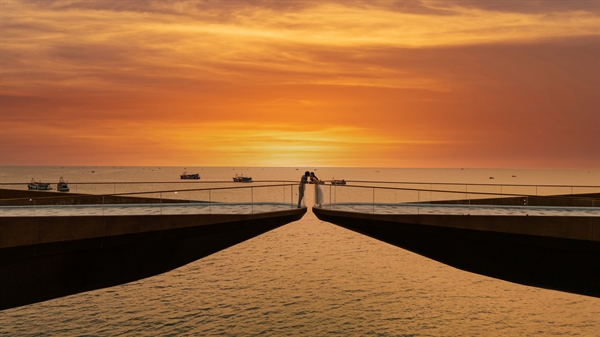 |
At the time, Kem beach was just a self-managed tourism destination, filled with seafood selling huts. Crab shells, snail shells, coconut shells, and plastic bags had been stacking up for years on the shore without being cleaned. Organic waste gradually decomposed into humus, turning the white sand black. The red dirt road to Kem beach was only 3-4 meters wide and was only usable in the dry season. To restore the beauty of the beach, Sun Group workers had to clean up trash, filter sand, and plant coconut trees. It took a whole year of work for the sand to turn white again.
The area around Kem beach did not have electricity or fresh water either. The entire construction site had to use power generators transported from the mainland. The available water on site was only enough for the rainy season. When the dry season came (November to the following April), water had to be transported here by tanker trucks. The road was small and bumpy, so every water truck that could reach the construction site was extremely precious.
 |
To create a world-class resort on Kem beach, Sun Group once again relied on the philosophy of "standing on the shoulders of giants".
“King of Resorts” Bill Benley was once again invited to this project. He was also the designer of the InterContinental Danang Sun Peninsula Resort that has won the "World's Most Luxurious Resort" award three times. With his guidance, another unique masterpiece was starting to take shape on Kem beach. Bill Bensley eventually turned the isolated beach into a “fantasy university” of Lamarck, making it look as if it existed 100 years ago. Each subdivision in the campus was designed like a university faculty with impressive pictures and information on agriculture, architecture, chemistry, zoology, etc.
A large volume of construction materials were transported by sea from the mainland to turn Bensley’s idea to reality. He also meticulously designed every single curtain, chair, and table to create distinctive features that are not found anywhere else.
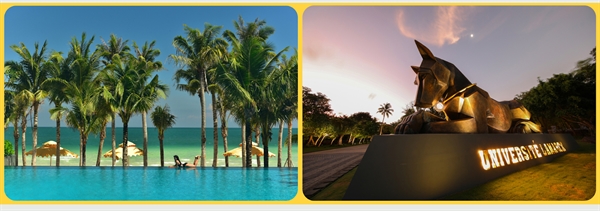 |
In 2018, two years after its inauguration, JW Marriott Phu Quoc Emerald Bay won two awards at the "Oscars” of the global tourism industry World Travel Awards. They were “World's Leading Luxury Island Resort & Villas” and “World's Leading Luxury Themed Resort”.
Remarkably, Indian billionaire couple Rushang Shah and Kaabia Grewal even chose this place as their wedding venue in 2019. The resort was fully booked for 4 days to organize 11 large and small events. The couple’s 600 guests were all big names from the aristocracy and upper class in India.
A dreamlike 18 years
Recalling how Phu Quoc has changed over the past 18 years, Phuong shared: "If there had been no tourists, people on Kem beach would still be making charcoal now, but there would be no trees left to burn."
Thanks to visitors and tourism projects, land prices in Phu Quoc have sharply increased. Phuong initially bought her piece with 20,000 VND (1.5 USD at the time), but now her mother has been offered 6 billion VND (252,300 USD) to sell her slot next to it. However, she thinks that is still a low price and hasn’t agreed to sell it. Many others have sold their land and become billionaires. They have built houses and bought cars to serve tourists. Phuong’s husband also works as a construction worker, earning 500,000 VND (21 USD) per day.
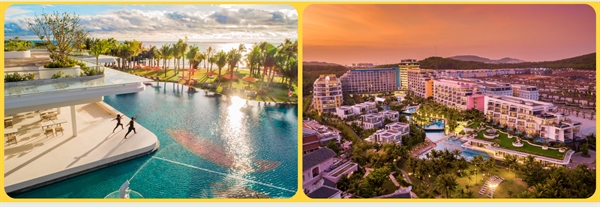 |
Tourist arrivals to Phu Quoc now grow up to 40% per year. Many of them come because of Sun Group's world-class works. "What we have built here over the past 7 years is pretty remarkable. But it's only about one-third to one-fifth of what Sun Group wants to do in Phu Quoc,” Quan said.
Assoc. Prof. Dr. Dinh Thien Tran (member of the Prime Minister's Economic Advisory Group) recently shared about the development of Phu Quoc: "Ten years ago, nobody could have imagined how progressive and gorgeous Phu Quoc would be. After only a short time, the island city has gathered several top tourism sites in the world. These projects can astound any visitor because of its uniqueness and moderness. Vietnamese people can undoubtedly be proud of their country thanks to those works."
Though it was also under the impact of the COVID-19 pandemic, Pearl Island has so far proven its strong position and internal strength. New high-class projects continue to be built around the island, such as the first high-rise towers facing the sea in Sunset Town on the Southwest coast. The towers are a symbol of inspiration for new development, which hopefully will help Phu Quoc’s reputation spread further to the world.
"Those buildings show that Phu Quoc is on the right path to become the new Singapore of Asia,” said Mr. Thien, “They also prove that we are capable of leading the trends and creating miraculous development for “eagle” destinations in Vietnam".
Same category news
-
Architect Pham Minh Nhut

 TIẾNG VIỆT
TIẾNG VIỆT 